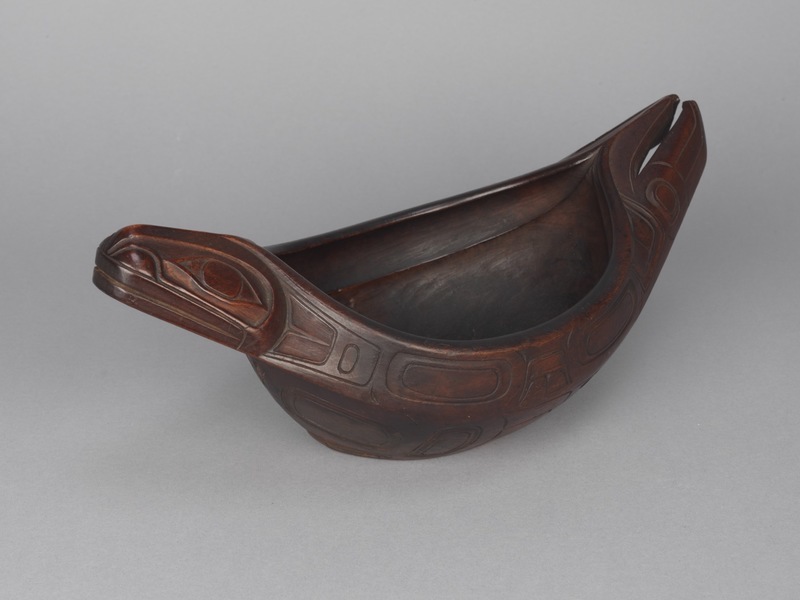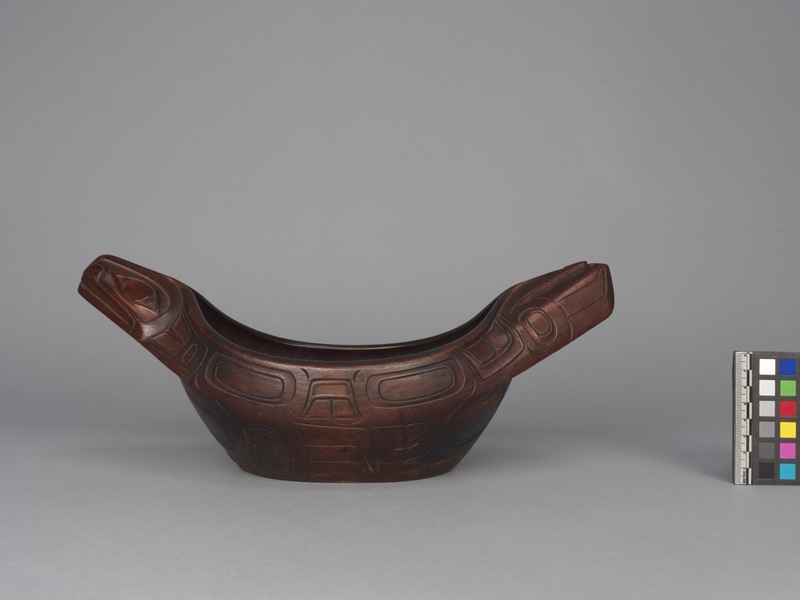Bowl Item Number: 3261/124 from the MOA: University of British Columbia


Description
Carved seal bowl. Oval shaped opening, seal head projects from one end, rear flippers from other end. Raised line carved around inside of the bowl’s cavity. Carved in low relief on the outside are stylized representations of flippers and joints. A solid carved line defines the seal’s eyelids. Varnish or stain over outer and inner surface, except on base.
History Of Use
Bowls such as this one were made and used by the First Nations of the northern Northwest Coast. They would typically hold the rich oil made from seal blubber or oolichan fish that is served to guests at feasts – a treasured condiment into which dried fish and meats would be dipped. “All of the guests except the greatest furnished their own trays and spoons,” noted ethnologist John Swanton in the winter of 1900/1901, describing the Haida feasts he witnessed; “Then the servants or slaves brought out food in trays and distributed it, beginning, of course, with the town chief.”
Item History
- Made in British Columbia, Canada during 1880
- Owned by Elspeth McConnell before April 12, 2018
- Received from Elspeth McConnell (Donor) on April 12, 2018
What
Who
- Culture
- Haida ?
- Previous Owner
- Elspeth McConnell
- Received from
- Elspeth McConnell (Donor)
Where
- Holding Institution
- MOA: University of British Columbia
- Made in
- British Columbia, Canada
When
- Creation Date
- during 1880
- Ownership Date
- before April 12, 2018
- Acquisition Date
- on April 12, 2018
Other
- Condition
- good
- Accession Number
- 3261/0124